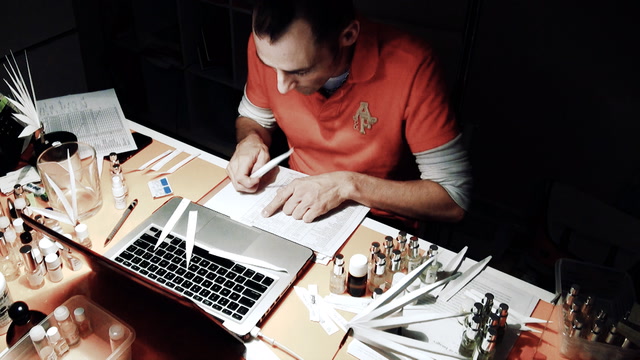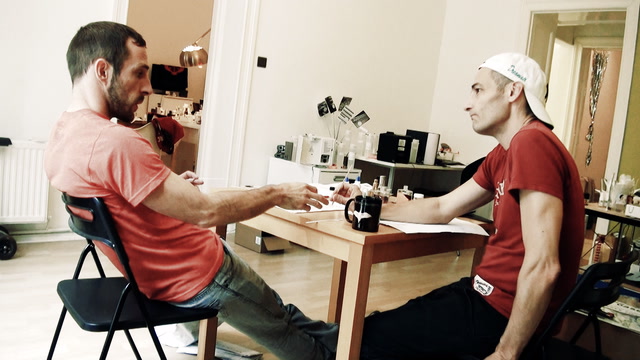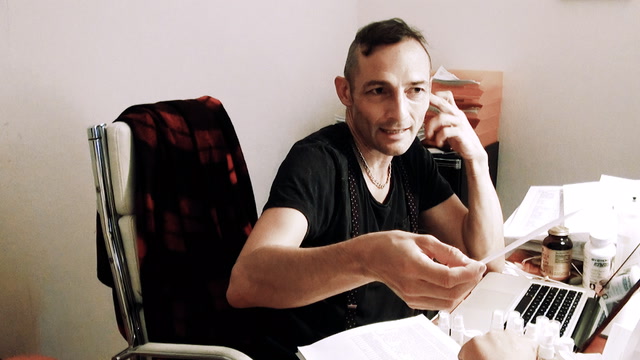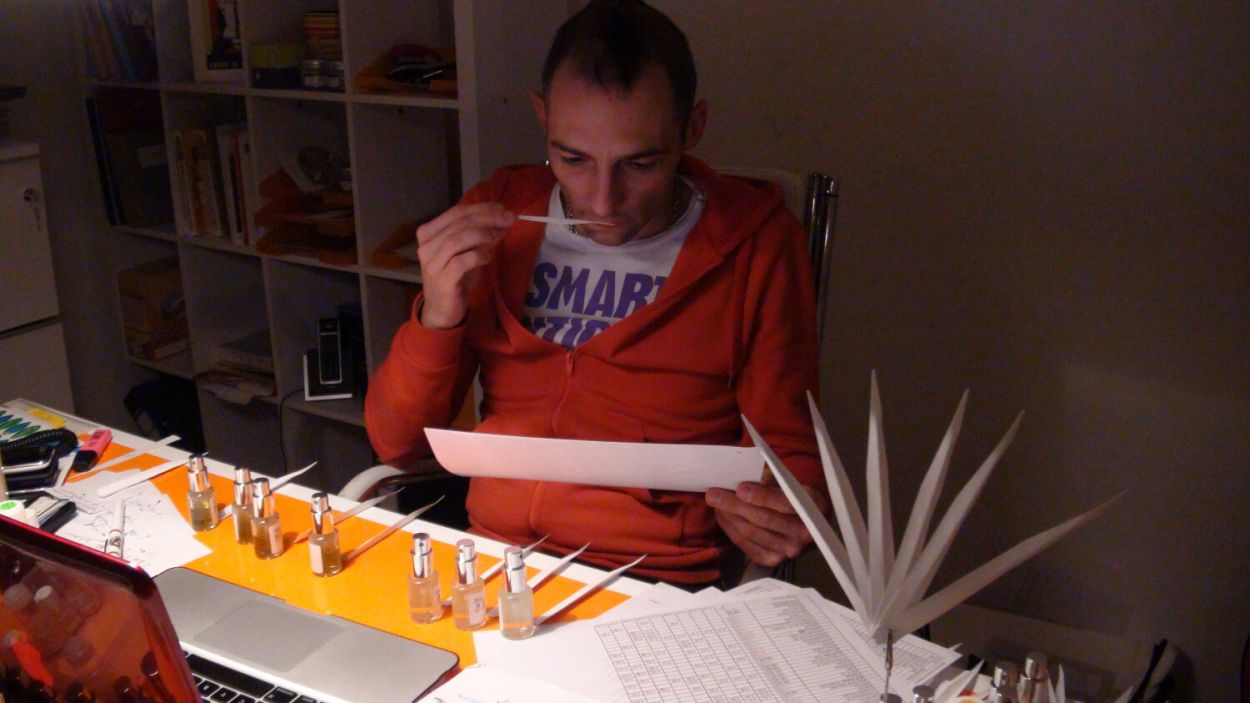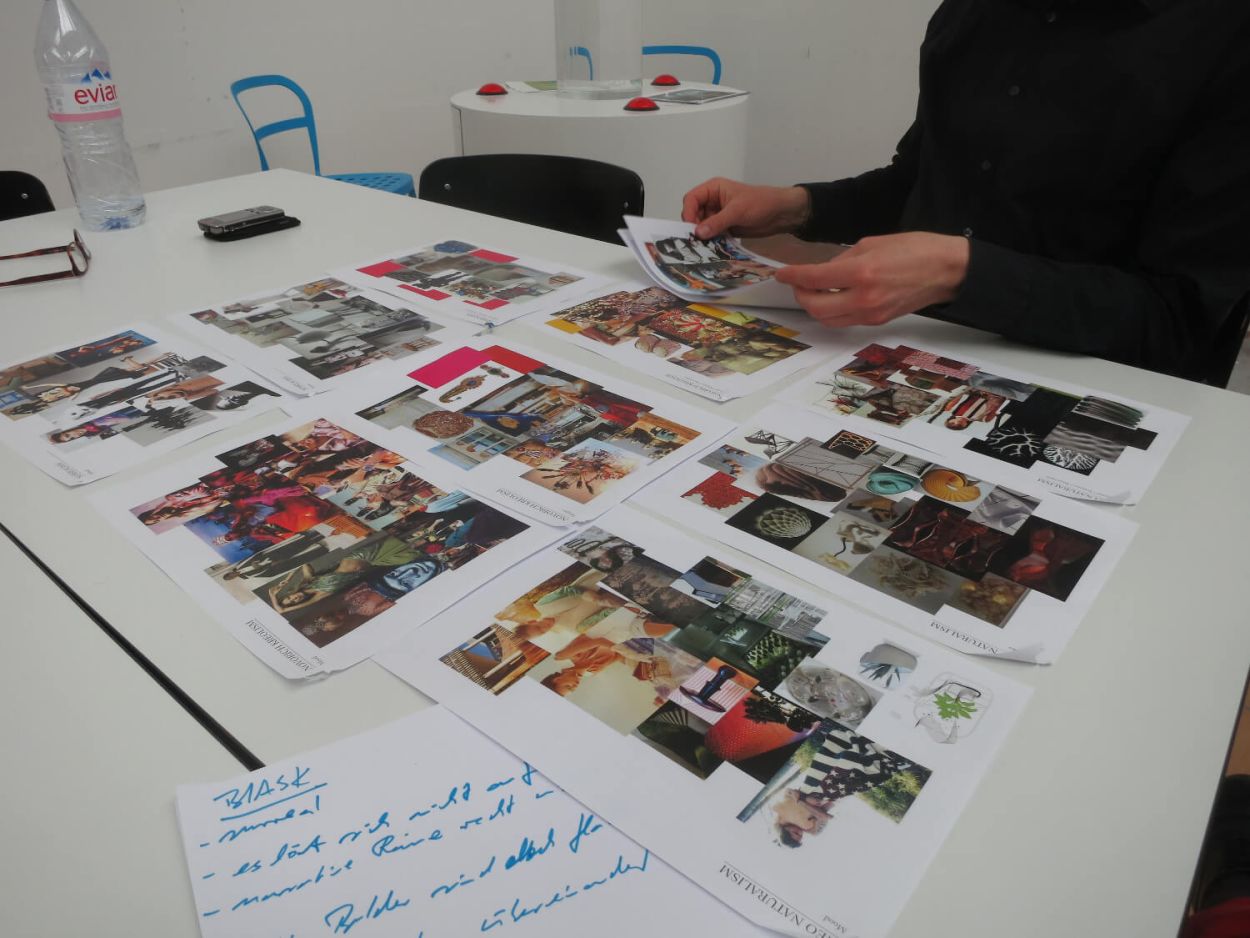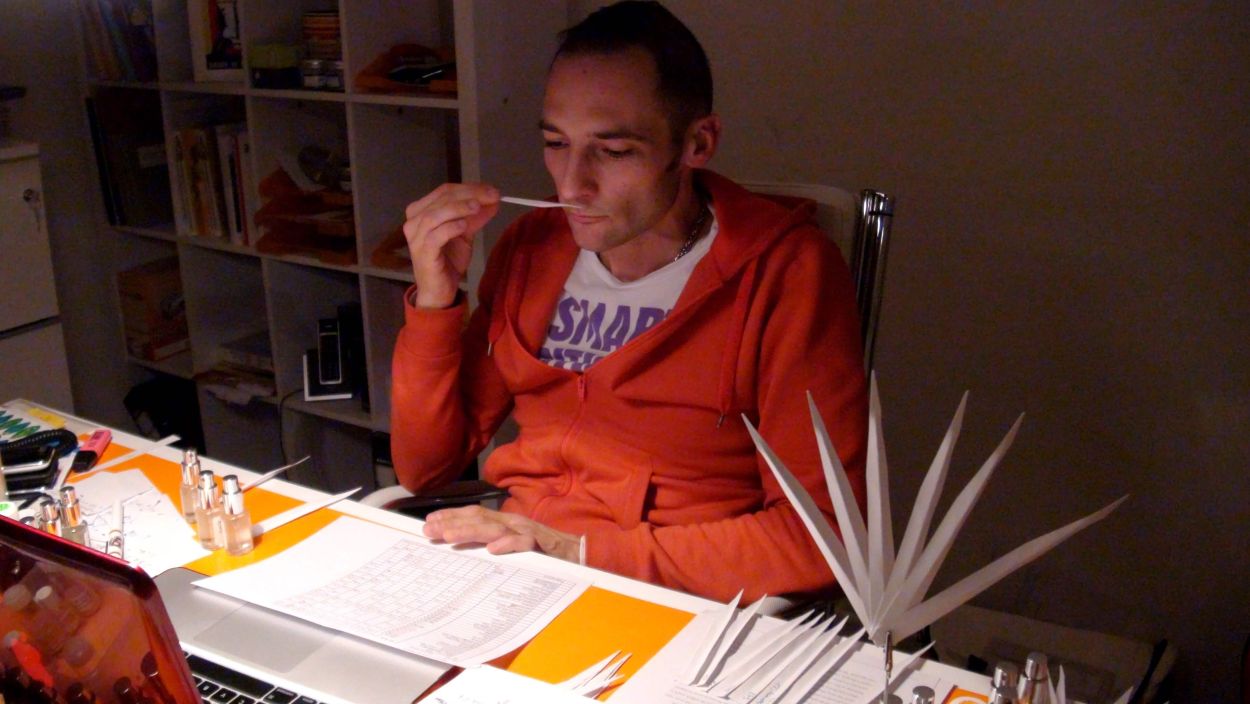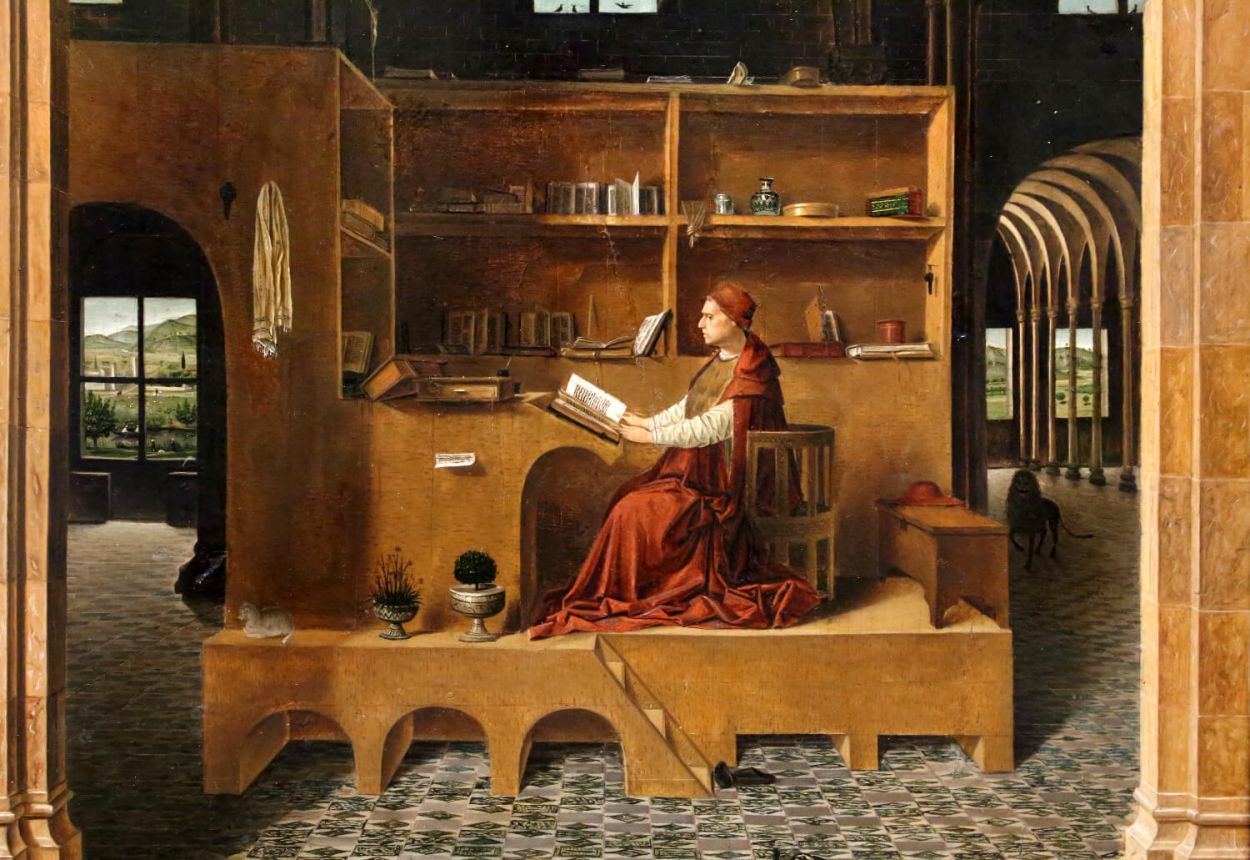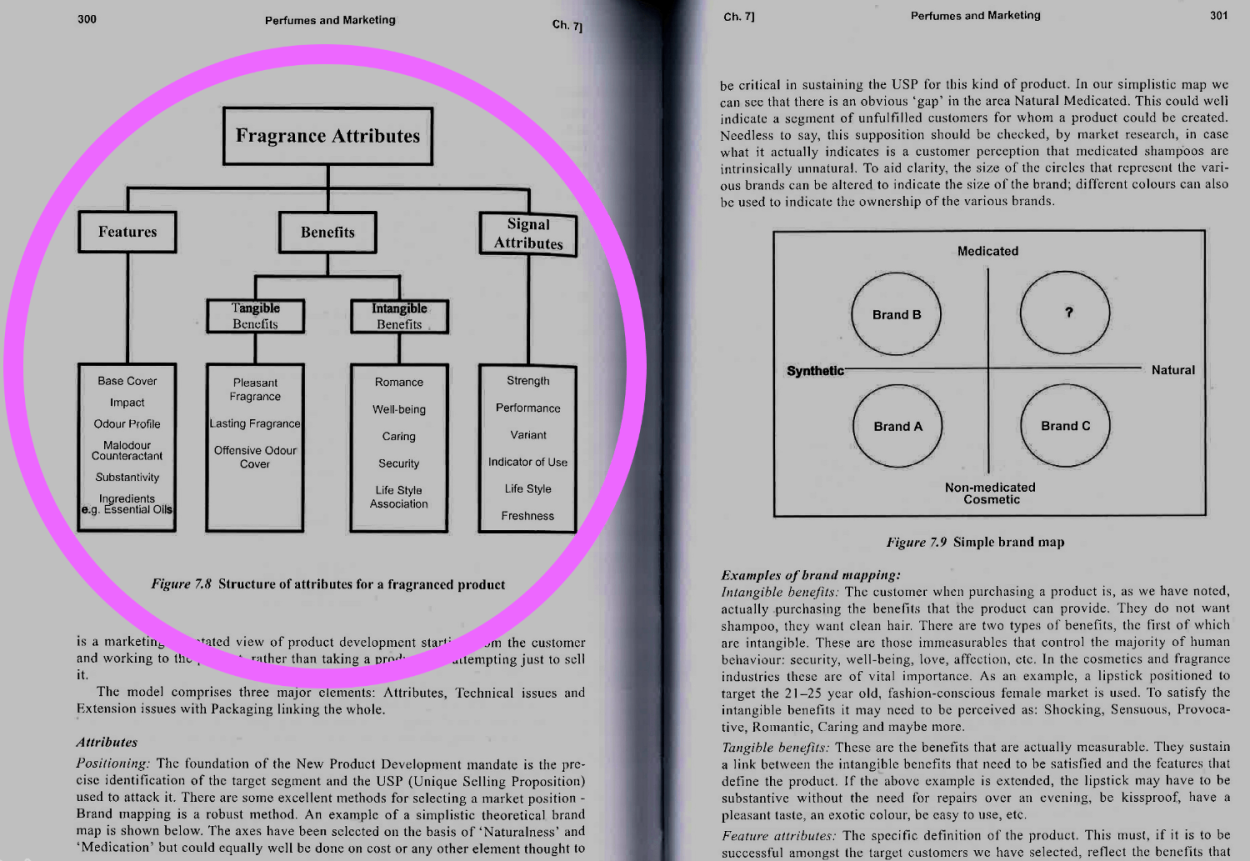Scent triangle: blotter-nose-formula0:42
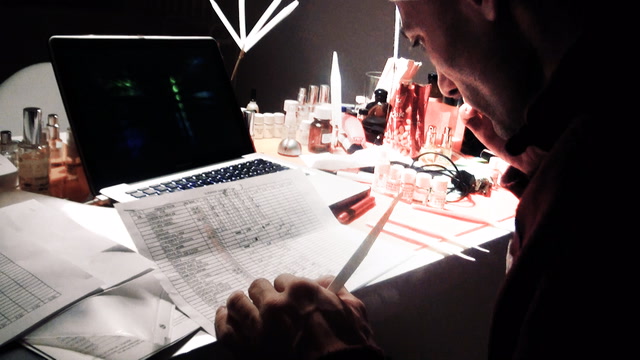
Scent triangle: blotter-nose-formula0:42
Fieldnotes are accounts that capture experiences and observations a researcher makes while doing fieldwork.
There is no one «natural», «correct» or even «objective» way for writing fieldnotes. Instead, depending on the researcher’s perception and interpretation, descriptions of the same situation can greatly differ. Yet, some observations are more compelling than others. Given our background in social and organization studies, the field of perfumery was completely new to us. Here is an excerpt from an early fieldnote Claus wrote when following Christophe’s silent practice as shown on this clip:
«The materiality and object-like qualities of scents are really special: on the one hand, the scent appears completely elusive, free of any kind of materiality whatsoever. Indeed, paper strips are necessary in order to make the scent tangible. If not, the scent would literally disappear in thin air, without anyone getting hold of it. Scents are unstable and changing: what smells flowery today, might tip over tomorrow into something fruity. What might appear good on the paper strip can prove unbearable on the skin. Depending on the time and the location, the scent changes its character. In this sense, the scent seems to be missing what usually characterizes an object: A scent is not stable, you can’t take it in your hand and it is usually highly subjective. BUT! The perfumer almost fights with the materiality of the scent: if the raw materials are missing on the shelves, the formula cannot be weighed. Yes indeed, the material proves to be the bottleneck. Even in the largest perfume houses, something is always missing, as Christophe mentioned earlier today. The scent’s materiality thus proves to be the boundary for the perfume development, a boundary that you cannot cross, that you simply have to live with. The materiality of the scent blocks. Scents cannot be recorded and replayed anytime. Scents also cannot be photographed and shown as picture to others. And they certainly cannot be digitalized. But still, one tries to trick the molecules. Because digital formulas are sent around the world as substitutes which outrun the physical logistics. This is what Christophe has done by emailing the formulas for Trust 31, 32, 33 to New York earlier today. But the formula is not a scetch/draft/layout that could be read. Even a perfumer cannot say anything about a scent by just looking at the formula. Instead, what is necessary in order to say something about the scent is the molecule: material, tangible. In this sense, a formula is different from a score. A formula can only be weighed – correctly or erroneously. There is no interpretation. The scent is only conveyable once the formula materializes into molecules. In this respect, a scent cannot be smelled sketchy or poorly. Either you smell the molecules of the weighed formula or you don’t. There is no bad resolution or compression of a scent, no transfer rate and no question of capacity. A scent is all or nothing, present or gone. So only when the formula materializes do we get to know the scent. And only then can we have an exchange about it on the telephone. If Christophe wants to talk to somebody about a scent, he needs to make sure that he himself and the other person he wants to talk to are exposed to the same molecules. When we smell we are taking molecules in. A scent is absorbed, by being incorporated. The scent becomes a part of our body – we inhale it and take it in. In this sense, a smell is something very personal. A scent molecule that I consume cannot be consumed by anyone else. But when you look at a picture, the same picture is also available to me without us being competitors – the same is true for listening/hearing. A bottle without a formula is meaningless. A formula without a bottle is also meaningless. You need blotter, formula and the human nose: A mutually interdependent scent triangle.»
